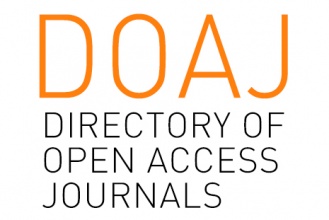Ethical and Creative Implications of Backing Track Utilization by Musicians in Live Stage Performances
Abstract
The integration of technology in music has emerged as a critical component in the creation, production, and presentation of live performances. Among the increasingly prevalent technologies is the backing track or sequencer, which enables musicians to incorporate pre-recorded musical elements into their live performances. However, the utilization of this technology introduces ethical dilemmas concerning authenticity and transparency within the realm of live performances. This study examines the ethical and creative implications associated with the use of backing tracks by musicians in the context of live performance. The findings suggest that the employment of backing tracks can be deemed ethical if executed with transparency while preserving the essence of liveness in the performing arts. Furthermore, this technology provides opportunities for musicians to enhance their creative expression; however, it also presents a risk of undermining the authenticity of the performance. By achieving a balance between artistry, technological utilization, and audience expectations, musicians can cultivate a performance experience that is both creative and ethically sound.
Keywords
Full Text:
PDFReferences
Adhimas, Y. B., Afrina, U., & Cleveresty, T. B. (2024). Teknologi Smartphone, Artificial Intelligence, Dan Kebijaksanaan Etika Dalam Pendidikan Bahasa Mandarin. CHANGLUN: Chinese Language, Literature, Culture and Linguistic, 3(1), Article 1. https://doi.org/10.20884/1.changlun.2024.3.1.11977
Anang, Y., Hadijaya, C., & Utomo, Y. K. (2021). Teknik Menerapkan Backing Track dalam Musik Ibadah Gereja. Journal of Theological Students, 10(2), 110–116.
Astuti, R., & Aziz, T. (2019). Integrasi Pengembangan Kreativitas Anak Usia Dini di TK Kanisius Sorowajan Yogyakarta. Jurnal Obsesi : Jurnal Pendidikan Anak Usia Dini, 3(2), Article 2. https://doi.org/10.31004/obsesi.v3i2.99
Baxter-Moore, N., & Kitts, T. M. (2016). The Live Concert Experience: An Introduction. Rock Music Studies, 3(1), 1–4. https://doi.org/10.1080/19401159.2015.1131923
Baym, N. K. (2018). Playing to the Crowd: Musicians, Audiences, and the Intimate Work of Connection. New York University Press. https://library.oapen.org/handle/20.500.12657/89477
Bresnahan, A. (2014). Toward A Deweyan Theory of Ethical and Aesthetic Performing Arts Practice. Journal of Aesthetics and Phenomenology, 1(2), 133–148. https://doi.org/10.2752/205393214X14083775794871
Brøvig-Hanssen, R. (2013). Music in Bits and Bits of Music: Signatures of Digital Mediation in Popular Music Recordings. University of Oslo.
Chakraborty, S., & Timoney, J. (2023). Multimodal Synchronization in Musical Ensembles: Investigating Audio and Visual Cues. Companion Publication of the 25th International Conference on Multimodal Interaction, 76–80. https://doi.org/10.1145/3610661.3617158
Dahlan, M. (2009). Pemikiran Filsafat Moral Immanuel Kant (Deontologi, Imperatif Kategoris dan Postulat Rasio Praktis). Jurnal Ilmiah Ilmu Ushuluddin, 8(1), 37–48. https://doi.org/10.18592/jiu.v8i1.1369
Fakhriyani, D. V. (2016). Pengembangan Kreativitas Anak Usia Dini. Wacana Didaktika, 4(2), 193–200. https://doi.org/10.31102/wacanadidaktika.4.2.193-200
Guo, X. (2023). The Evolution of the Music Industry in the Digital Age: From Records to Streaming. Journal of Sociology and Ethnology, 5(10), 7–12. https://doi.org/10.23977/jsoce.2023.051002
Hadiyati, E. (2011). Kreativitas dan Inovasi Berpengaruh Terhadap Kewirausahaan Usaha Kecil. Jurnal Manajemen Dan Kewirausahaan, 13(1), Article 1. https://doi.org/10.9744/jmk.13.1.8-16
Hasoloan, A. (2018). Peranan Etika Bisnis dalam Perusahaan. Jurnal Warta Dharmawangsa, 57.
Hendrawan, D. (2024). Peran Penggunaan Sequencer dalam Pertunjukan Musik Langsung Band Nineteenninex. Journal of Music Science, Technology, and Industry, 7(2), Article 2.
Hosken, D. W. (2011). An introduction to music technology (1st ed). Routledge.
Ingadóttir, T. S., & Jonsdottir, H. (2006). Technological dependency--the experience of using home ventilators and long-term oxygen therapy: Patients’ and families’ perspective. Scandinavian Journal of Caring Sciences, 20(1), 18–25. https://doi.org/10.1111/j.1471-6712.2006.00375.x
Joyo, P. R. (2021). Kisah Kesetiaan Bhisma Pada Hastinapura: Fenomena Pergeseran Etika Deontologi Menuju Teleologi. Bawi Ayah: Jurnal Pendidikan Agama dan Budaya Hindu, 12(2), Article 2. https://doi.org/10.33363/ba.v12i2.724
Kjus, Y., & Danielsen, A. (2016). Live mediation: Performing concerts using studio technology. Popular Music, 35(3), 320–337. https://doi.org/10.1017/S0261143016000568
Kleive-Andersen, T. (2024). Engineering the Live Experience: Adapting Pop Studio Sound to Stage with Authenticity [Master thesis, NTNU]. https://ntnuopen.ntnu.no/ntnu-xmlui/handle/11250/3151536
Knowles, J. D., & Hewitt, D. (2011). Performance Recordivity: Studio Music in a Live Context. Proceedings of the 7th Art of Record Production Conference 2011. 7th Art of Record Production Conference, San Fransisco.
Mulder, A. (1998). Virtual Musical Instruments: Accessing the Sound Synthesis Universe as a Performer. Proceedings of the First Brazilian Symposium on Computer Music, 243–250.
Rachman, A., & Utomo, U. (2017). “Sing Penting Keroncong” Sebuah Inovasi Pertunjukkan Musik Keroncong di Semarang. JPKS (Jurnal Pendidikan dan Kajian Seni), 3(1). https://doi.org/10.30870/jpks.v3i1.4066
Radnedge, A. (2024, July 2). Expert reveals big gig pressure is driving acts to use backing tracks. Mail Online. https://www.dailymail.co.uk/news/article-13592633/live-bands-Motley-Crue-backing-tracks-Glastonbury-miming-row.html
Ramadhan, Z., Handiki, Y. R. P., & Jamhari. (2024). Batasan Etis Penggunaan Deepfake: Analisis Perspektif Etika Misbah Yazdi. Proceeding International Conference on Tradition and Religious Studies, 3(1), Article 1.
Robertson, A., & Plumbley, M. D. (2013). Synchronizing Sequencing Software to a Live Drummer. Computer Music Journal, 37(2), 46–60. https://doi.org/10.1162/COMJ_a_00178
Sanden, P. (2013). Liveness in Modern Music: Musicians, Technology, and the Perception of Performance. Routledge. https://doi.org/10.4324/9780203078518
Sherwin, A. (2013, August 19). Musician calls for big bands to come clean on secret backing tracks. The Independent. https://www.independent.co.uk/arts-entertainment/music/news/musician-calls-for-big-bands-to-come-clean-on-secret-backing-tracks-8773412.html
Shu, Q., Tu, Q., & Wang, K. (2011). The Impact of Computer Self-Efficacy and Technology Dependence on Computer-Related Technostress: A Social Cognitive Theory Perspective. International Journal of Human–Computer Interaction, 27(10), 923–939. https://doi.org/10.1080/10447318.2011.555313
Sonjani, C. C., & Harwanto, D. C. (2022). Proses Pembuatan dan Fungsi Sequencer dalam Aransemen Musik Ibadah di Petra Community Church Semarang. Tonika: Jurnal Penelitian Dan Pengkajian Seni, 5(2), Article 2. https://doi.org/10.37368/tonika.v5i2.469
Surahman, S. (2016). Determinisme Teknologi Komunikasi dan Globalisasi Media Terhadap Seni Budaya Indonesia. REKAM: Jurnal Fotografi, Televisi, dan Animasi, 12(1), 31. https://doi.org/10.24821/rekam.v12i1.1385
Swarbrick, D., Bosnyak, D., Livingstone, S. R., Bansal, J., Marsh-Rollo, S., Woolhouse, M. H., & Trainor, L. J. (2019). How Live Music Moves Us: Head Movement Differences in Audiences to Live Versus Recorded Music. Frontiers in Psychology, 9. https://doi.org/10.3389/fpsyg.2018.02682
Tanev, G., & Božinovski, A. (2013). Virtual Studio Technology and Its Application in Digital Music Production. Proceedings of the 10th Conference for Informatics and Information Technology.
Teixeira, W., & Ferraz, S. (2018). Musical Performance Ethics. DEBATES - Cadernos Do Programa de Pós-Graduação Em Música, 20, Article 20. https://seer.unirio.br/revistadebates/article/view/7868
Trapp, P. (2022, September 28). Falling In Reverse Pulled Out of a Festival Because Their Laptops Went Missing. Loudwire. https://loudwire.com/falling-in-reverse-laptops-wiil-fest-ronnie-radke-video/
Waddell, G., & Williamon, A. (2019). Technology Use and Attitudes in Music Learning. Frontiers in ICT, 6. https://doi.org/10.3389/fict.2019.00011
Widodo, A. R. W., & Kasiyan, K. (2024). Hyperreality in Music Computerization in the Globalization Era: A Study of the Influence of Technology on the Music Creation Experience. International Journal of Multicultural and Multireligious Understanding, 11(2), Article 2. https://doi.org/10.18415/ijmmu.v11i2.5389
Wrahatnala, B. (2021). Inovasi dan Pembauran Genre dalam Pertunjukan Keroncong Wayang Gendut. Resital: Jurnal Seni Pertunjukan, 22, 69–79. https://doi.org/10.24821/resital.v22i2.5180
DOI: http://dx.doi.org/10.18415/ijmmu.v12i2.6480
Refbacks
- There are currently no refbacks.
Copyright (c) 2025 International Journal of Multicultural and Multireligious Understanding

This work is licensed under a Creative Commons Attribution-NonCommercial-NoDerivatives 4.0 International License.
https://ijmmu.com
editor@ijmmu.com
facebook.com/ijmmu
Copyright © 2014-2018 IJMMU. All rights reserved.




































